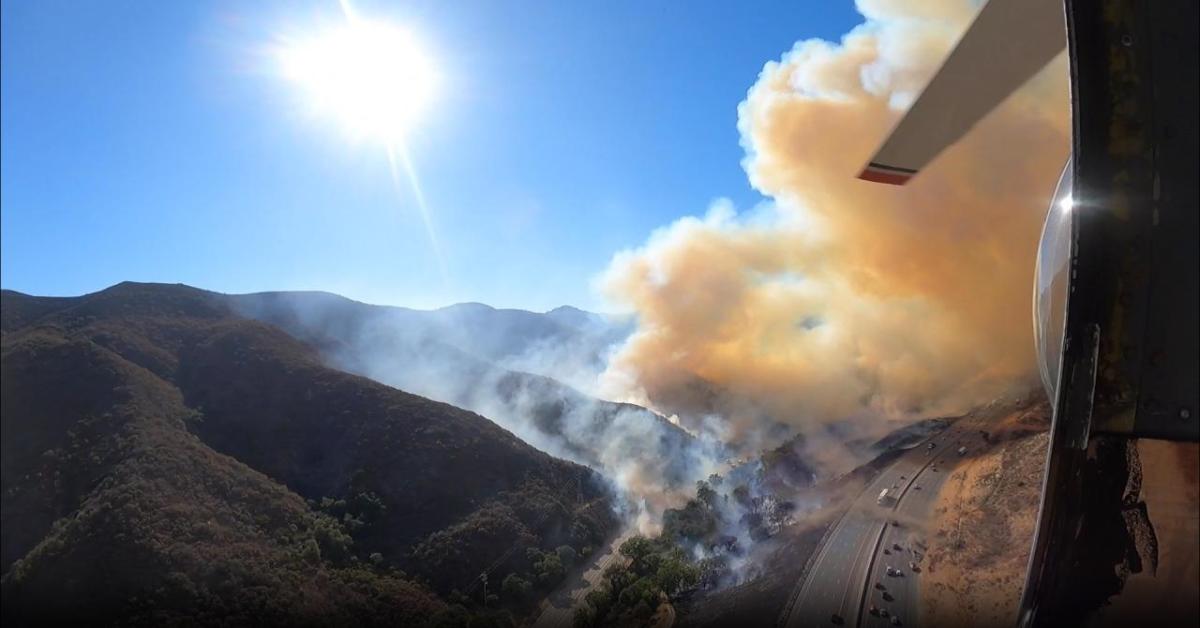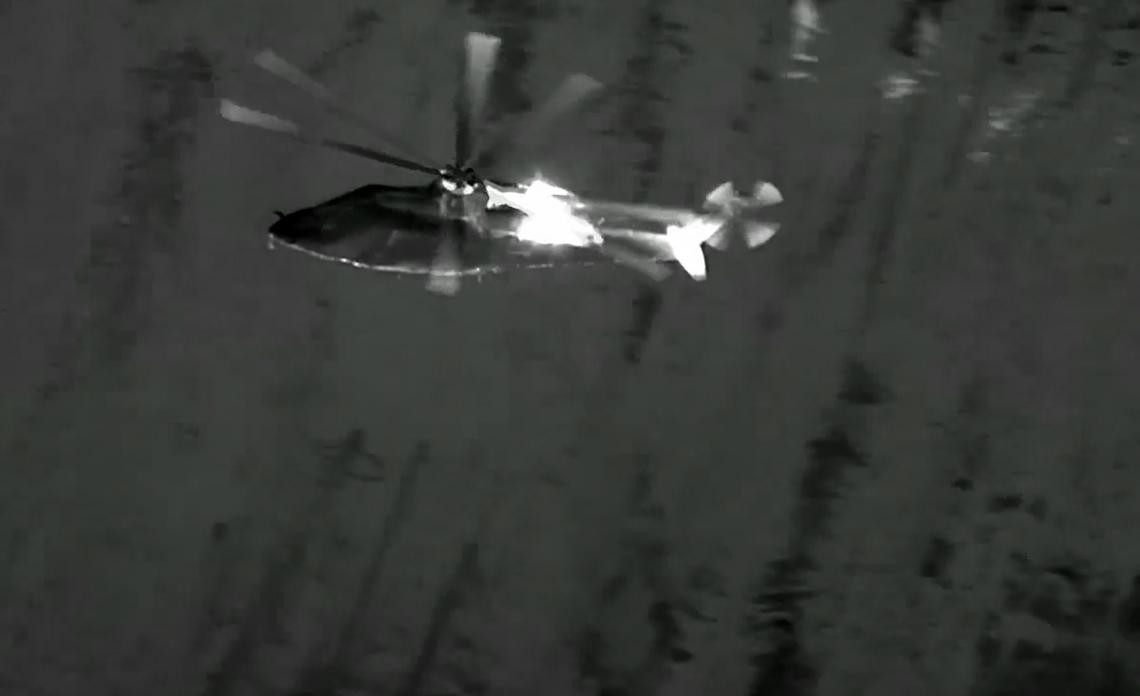Eyes in the Sky Help Fire Suppression Fleet Fly Around the Clock
The helitanker and reconnaissance pilots of SCE’s Quick Reaction Force provide dramatic wildfire-fighting benefits.
Energized by Edison
by David Song, ENERGIZED by Edison Writer
B-Roll: Wildfire Mitigation Program Interview Package
B-Roll: Wildfire Mitigation Program Footage
At about noon on Aug. 26, 1996, the Marple Fire started between Interstate 5 and Castaic Lake in northwestern Los Angeles County. By midnight, it had spread to 10,000 acres, and by the time it was contained, nearly 20,000 acres had burned
Almost exactly 26 years later, the Route Fire started in the same area but with a far different outcome: burning just 5,000 acres.
While the improvement can be attributed partly to the evolution of wildland firefighting and technological advances made by federal, state and regional fire agencies, the deployment of the Quick Reaction Force fire suppression helitanker fleet was a significant factor.
“The Route Fire could have turned out a lot differently,” said Colin Morgan, who flew that night as lead pilot for one of the helitankers. “The day crews had made really good progress by sunset but having the ability to support the ground crews through the night made a real difference.”
During peak wildfire season, the “QRF package” will feature three Boeing CH-47 Chinook helitankers that can each drop 3,000-gallon payloads of water or fire retardant. They can operate day or night and can fill their tanks with a retractable snorkel while hovering, allowing for a faster return to the fire line.
“When most of the fire people left that first day of the Route Fire, they probably thought, ‘tomorrow is going be a big day,’” said Scott Jones, a 32-year retired veteran of the Los Angeles County Fire Department who is now the QRF program lead coordinator. “They had a lot of resources ordered for the following day, but the QRF came in there and knocked down the flaming front with fire retardant on the first night.”
The fleet also includes an S-76 intelligence and reconnaissance helicopter, which does not drop payload but is equally important. Crew members wear night vision goggles and operate as the quarterbacks of the QRF team.
“If you listen to the S-76 crew organize aircraft, talk to the ground, the multitasking and the abilities that they have, it’s mind-blowing,” said Ryan O’Herron, another CH-47 lead pilot. “Their sense of calm in a high-intensity environment like the Route Fire. With dozens of other agency aircraft, maintaining effective communication is quite a task that requires a special personality.”
Fred Burris, an air tactical supervisor, is one of those special personalities. He has been flying the S-76 helicopter since 2009.&
“We make sure the airspace is organized in what we call the fire traffic area,” Burris said. “We organize that to ensure the aircraft are oriented to one another, to their drop and the target area, and then simultaneously or in sequence, we’re talking to the ground incident commander.”
His years of experience in the S-76 combined with 40 years fighting fires — much of it as a wildland firefighter — are instrumental for the nocturnal orchestration of air drops.
“We’re looking down at the ground and seeing a hand crew, and I see what they’re trying to do, even in the absence of a lot of direction,” Burris said. “It’s an attribute we bring as the aerial supervision for the QRF.”
This experience provides the helitanker pilots with confidence in the firefighting airspace.
“Fred and his team provide the pilots with the comfort and security that they know where they’re going and that someone is looking out for them,” Jones said. “The S-76 team warns the pilots of a multitude of hazards, so it’s an important aspect of the teamwork.”
The four aircraft, with Burris’ team in the lead, will patrol the Southern California skies again this year.
Southern California Edison’s 2023 Wildfire Mitigation Plan calls for the continued support and expansion of regional fire agencies. This year, SCE is nearly doubling its contribution and will provide almost $35 million to its local fire agency partners to fund the standby costs for the QRF program. In previous years, the partnership with the Orange County Fire Authority, Los Angeles County Fire Department and Ventura County Fire Department was active for only the second half of the calendar year during peak fire season.
While the threat of wildfires in Southern California may have eased temporarily because of an unusually wet winter, there’s little doubt the threat will return as the weather warms.
“I have worked across the country and overseas for many years, and one thing I’ve noticed about Southern California is the sheer volume of land adjacent to millions of people,” said O’Herron. “You don’t see this to the same degree in Santiago, Chile, or Sydney, Australia. At the end of the day, the QRF is not just trying to put out fires; we are trying to protect people.”
For more information about SCE’s wildfire mitigation efforts, visit edison.com/wildfire-safety.






